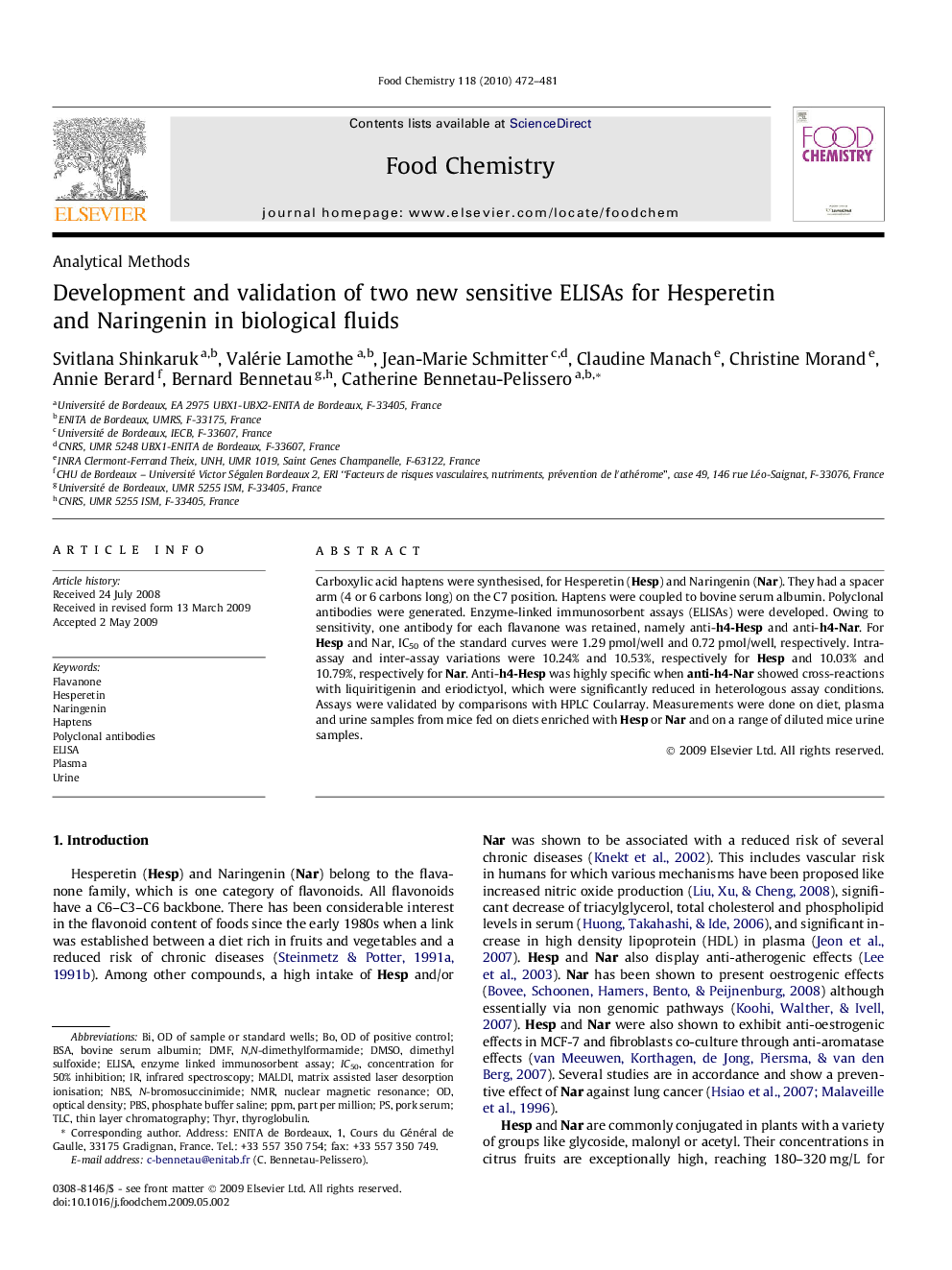| Article ID | Journal | Published Year | Pages | File Type |
|---|---|---|---|---|
| 1186951 | Food Chemistry | 2010 | 10 Pages |
Abstract
Carboxylic acid haptens were synthesised, for Hesperetin (Hesp) and Naringenin (Nar). They had a spacer arm (4 or 6 carbons long) on the C7 position. Haptens were coupled to bovine serum albumin. Polyclonal antibodies were generated. Enzyme-linked immunosorbent assays (ELISAs) were developed. Owing to sensitivity, one antibody for each flavanone was retained, namely anti-h4-Hesp and anti-h4-Nar. For Hesp and Nar, IC50 of the standard curves were 1.29Â pmol/well and 0.72Â pmol/well, respectively. Intra-assay and inter-assay variations were 10.24% and 10.53%, respectively for Hesp and 10.03% and 10.79%, respectively for Nar. Anti-h4-Hesp was highly specific when anti-h4-Nar showed cross-reactions with liquiritigenin and eriodictyol, which were significantly reduced in heterologous assay conditions. Assays were validated by comparisons with HPLC Coularray. Measurements were done on diet, plasma and urine samples from mice fed on diets enriched with Hesp or Nar and on a range of diluted mice urine samples.
Keywords
IC50matrix assisted laser desorption ionisationN-bromosuccinimideNBSppmTLCDMFPBSnuclear magnetic resonanceBSADMSON,N-dimethylformamidebovine serum albuminPolyclonal antibodiesenzyme linked immunosorbent assayUrinepart per millionELISANMRThyroglobulinDimethyl sulfoxideInfrared spectroscopyConcentration for 50% Inhibitionphosphate buffer salineFlavanoneMALDINaringeninHaptensHesperetinPlasmaoptical densitythin layer chromatography
Related Topics
Physical Sciences and Engineering
Chemistry
Analytical Chemistry
Authors
Svitlana Shinkaruk, Valérie Lamothe, Jean-Marie Schmitter, Claudine Manach, Christine Morand, Annie Berard, Bernard Bennetau, Catherine Bennetau-Pelissero,
